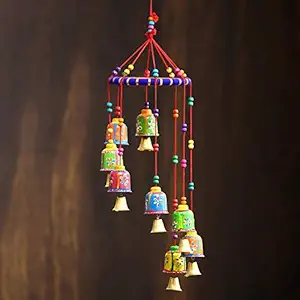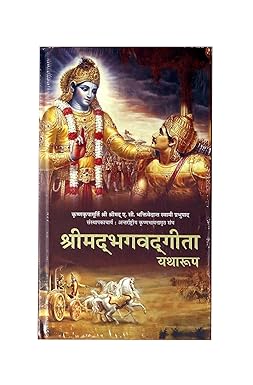नवरात्रि: प्रत्येक दिन एक अलग देवी को समर्पित होता है
नवरात्रि के नौ दिन मां दुर्गा के नौ रूपों की पूजा के लिए समर्पित होते हैं। प्रत्येक दिन एक विशेष रूप को समर्पित होता है, और भक्त उनकी पूजा करते हैं। आइए जानें कि हर दिन कौन सी देवी की पूजा की जाती है और उससे जुड़ी परंपराएं क्या हैं।
पहला दिन: शैलपुत्री
- रूप: पर्वतों की पुत्री शैलपुत्री।
- रिवाज: कलश स्थापना और उपवास से नवरात्रि की शुरुआत होती है।
- रंग: लाल – शक्ति और साहस का प्रतीक।
दूसरा दिन: ब्रह्मचारिणी
- रूप: तप और संयम की देवी।
- रिवाज: शांति और धैर्य की प्रार्थना की जाती है।
- रंग: नीला – शांति और मजबूती का प्रतीक।
तीसरा दिन: चंद्रघंटा
- रूप: साहस और वीरता की देवी।
- रिवाज: भक्त साहस के लिए प्रार्थना करते हैं।
- रंग: पीला – खुशी और उजाले का प्रतीक।
चौथा दिन: कूष्मांडा
- रूप: सृष्टि की रचयिता।
- रिवाज: कद्दू की भेंट दी जाती है।
- रंग: हरा – समृद्धि और विकास का प्रतीक।
पाँचवा दिन: स्कंदमाता
- रूप: भगवान कार्तिकेय की माता।
- रिवाज: परिवार की समृद्धि के लिए प्रार्थना की जाती है।
- रंग: ग्रे – परिवर्तन की शक्ति का प्रतीक।
छठा दिन: कात्यायनी
- रूप: रक्षा और सुरक्षा की देवी।
- रिवाज: दुर्गा पूजा और मंत्र जाप।
- रंग: नारंगी – शक्ति का प्रतीक।
सातवां दिन: कालरात्रि
- रूप: बुराई का नाश करने वाली देवी।
- रिवाज: दीप जलाकर नकारात्मकता को दूर किया जाता है।
- रंग: सफेद – शुद्धता का प्रतीक।
आठवां दिन: महागौरी
- रूप: शांति और शुद्धता की देवी।
- रिवाज: क्षमा और आंतरिक शांति के लिए प्रार्थना।
- रंग: गुलाबी – आशा और नई शुरुआत का प्रतीक।
नौवां दिन: सिद्धिदात्री
- रूप: सिद्धियों की देवी।
- रिवाज: हवन और मंत्रोच्चार द्वारा देवी की पूजा।
- रंग: बैंगनी – शक्ति और महत्त्वाकांक्षा का प्रतीक।
Day 1: Shailaputri
Rituals: Kalash Sthapana and Fasting
Devotees initiate Navratri by establishing a sacred pot (Kalash) and observing a fast to honor Shailaputri.
Color: Red
The color red symbolizes power and valor, reflecting Shailaputri's attributes.
Day 2: Brahmacharini
Form: Goddess of Penance
Brahmacharini embodies austerity and devotion. She is depicted holding a rosary and a water pot.
Rituals: Prayers for Peace and Patience
Devotees seek tranquility and perseverance through prayers and meditation.
Color: Blue
Blue represents peace and stability, qualities associated with Brahmacharini.
Day 3: Chandraghanta
Form: Goddess of Valor
Chandraghanta is depicted with a half-moon shaped like a bell on her forehead, symbolizing bravery.
Rituals: Prayers for Courage
Devotees pray for strength and fearlessness in the face of challenges.
Color: Yellow
Yellow signifies joy and brightness, reflecting Chandraghanta's radiant energy.
Day 4: Kushmanda
Form: Creator of the Universe
Kushmanda is believed to have created the universe with her divine smile, bringing light and energy.
Rituals: Offering Pumpkin
Devotees offer pumpkins to honor Kushmanda's role in creation.
Color: Green
Green symbolizes fertility and growth, attributes associated with Kushmanda.
Day 5: Skandamata
Form: Mother of Skanda
Skandamata is the mother of Lord Kartikeya (Skanda) and is depicted riding a lion with her son.
Rituals: Prayers for Family Prosperity
Devotees pray for the well-being and prosperity of their families.
Color: Grey
Grey represents transformation and balance, reflecting Skandamata's nurturing qualities.
Day 6: Katyayani
Form: Warrior Goddess
Katyayani is depicted riding a lion, holding a sword, symbolizing her warrior aspect.
Rituals: Durga Puja and Chanting
Devotees perform Durga Puja and chant mantras to invoke Katyayani's blessings.
Color: Orange
Orange signifies energy and enthusiasm, reflecting Katyayani's dynamic nature.
Day 7: Kalratri
Form: Goddess of Destruction
Kalratri is depicted with a dark complexion, riding a donkey, symbolizing the destruction of evil.
Rituals: Lighting Lamps
Devotees light lamps to dispel darkness and seek Kalratri's protection.
Color: White
White symbolizes purity and peace, reflecting Kalratri's transformative power.
Day 8: Mahagauri
Form: Goddess of Purity
Mahagauri is depicted with a white complexion, symbolizing purity and serenity.
Rituals: Prayers for Forgiveness
Devotees seek forgiveness and inner peace through prayers and rituals.
Color: Pink
Pink represents hope and new beginnings, reflecting Mahagauri's rejuvenating energy.
Day 9: Siddhidatri
Form: Goddess of Perfection
Siddhidatri is the giver of all siddhis (spiritual powers) and is depicted sitting on a lotus.
Rituals: Havan and Chanting
Devotees perform havan (sacrificial fire) and chant mantras to seek Siddhidatri's blessings.
Color: Purple
Purple signifies ambition and spiritual growth, reflecting Siddhidatri's divine attributes.
Devotees initiate Navratri by establishing a sacred pot (Kalash) and observing a fast to honor Shailaputri.
The color red symbolizes power and valor, reflecting Shailaputri's attributes.
Brahmacharini embodies austerity and devotion. She is depicted holding a rosary and a water pot.
Devotees seek tranquility and perseverance through prayers and meditation.
Blue represents peace and stability, qualities associated with Brahmacharini.
Chandraghanta is depicted with a half-moon shaped like a bell on her forehead, symbolizing bravery.
Devotees pray for strength and fearlessness in the face of challenges.
Yellow signifies joy and brightness, reflecting Chandraghanta's radiant energy.
Kushmanda is believed to have created the universe with her divine smile, bringing light and energy.
Devotees offer pumpkins to honor Kushmanda's role in creation.
Green symbolizes fertility and growth, attributes associated with Kushmanda.
Skandamata is the mother of Lord Kartikeya (Skanda) and is depicted riding a lion with her son.
Devotees pray for the well-being and prosperity of their families.
Grey represents transformation and balance, reflecting Skandamata's nurturing qualities.
Katyayani is depicted riding a lion, holding a sword, symbolizing her warrior aspect.
Devotees perform Durga Puja and chant mantras to invoke Katyayani's blessings.
Orange signifies energy and enthusiasm, reflecting Katyayani's dynamic nature.
Kalratri is depicted with a dark complexion, riding a donkey, symbolizing the destruction of evil.
Devotees light lamps to dispel darkness and seek Kalratri's protection.
White symbolizes purity and peace, reflecting Kalratri's transformative power.
Mahagauri is depicted with a white complexion, symbolizing purity and serenity.
Devotees seek forgiveness and inner peace through prayers and rituals.
Pink represents hope and new beginnings, reflecting Mahagauri's rejuvenating energy.
Siddhidatri is the giver of all siddhis (spiritual powers) and is depicted sitting on a lotus.
Devotees perform havan (sacrificial fire) and chant mantras to seek Siddhidatri's blessings.
Purple signifies ambition and spiritual growth, reflecting Siddhidatri's divine attributes.


